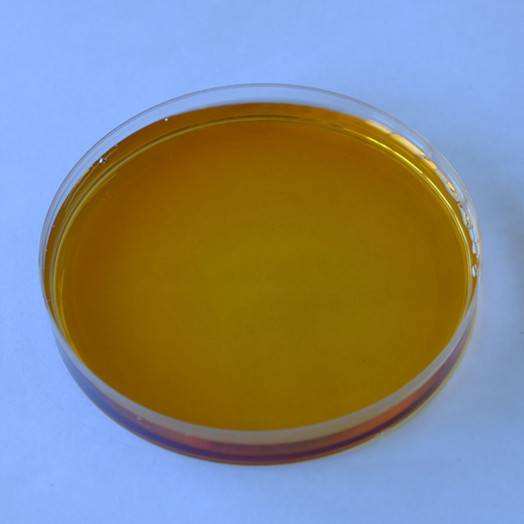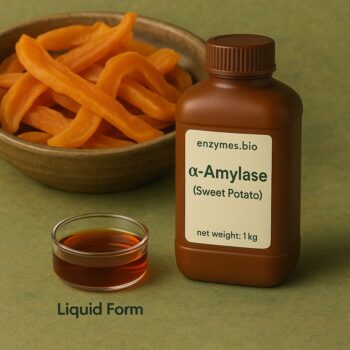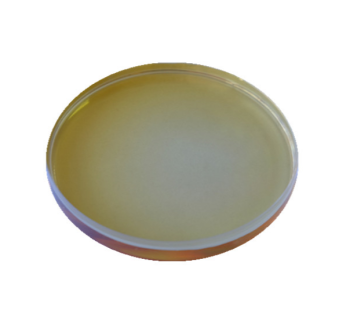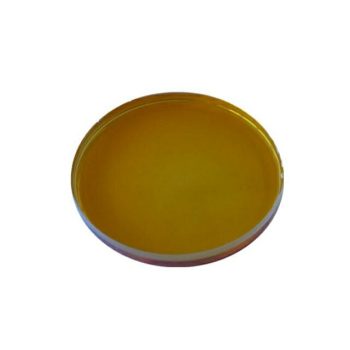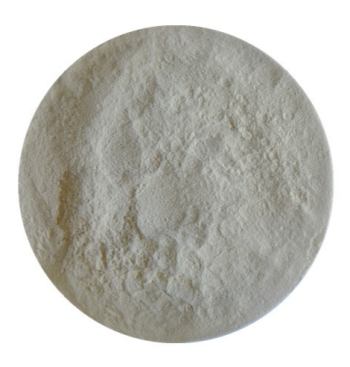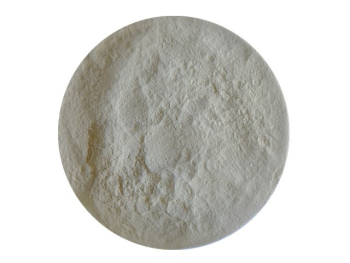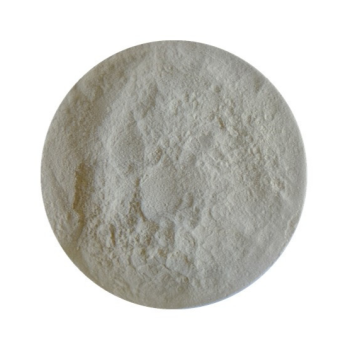High-Temperature Alpha Amylase Enzyme For Industrial Ethanol
Introduction
High-temperature alpha-amylase is made from the strain of Bacillus licheniformis produced by submerged fermentation, separation, and extraction technology. Through deep fermentation and extraction techniques, High State Amylase, with excellent heat resistance, is widely used in the industries of starch sugar (glucose, maltose, dextrin, fructose, oligosaccharide), alcohol, beer, monosodium glutamate, brewing, organic acid, textile, print, dyeing, papermaking, and other fermentation industries.
Definition Of Unit
1 unit of Glucoamylase equals the amount of enzyme which hydrolyzes soluble starch to get 1mg glucose at 40℃ and pH 4.6 in 1h.
Characteristics
| Declared Activity | 30000 u/g |
| Production Organism | Aspergillus niger |
| Physical Form | Liquid |
| Color | Brown, color can vary from batch to batch. Color intensity is not an indication of enzyme activity. |
| Odour | Normal microbial fermentation odour. |
Specifications
| Items | Lower Limit | Upper Limit |
| Enzyme Activity | 130000 u/g | |
| Lead | 5 mg/kg | |
| Arsenic | 3 mg/kg | |
| Total Viable Count | 50,000 CFU/g | |
| Coliform Bacteria | 30 CFU/g | |
| Escherichia coli | 10 CFU/g 3 MPN/g | |
| Salmonella | Not Detected/25g |
Dosage
Alcohol and ethanol industry: The recommended dosage is 0.6-1.2L per ton of total raw materials. Added at the beginning of saccharification after pH adjustment, then saccharifying at 60℃ and pH 4.0-4.5 for 30-60 minutes.
Beer industry: The recommended dosage is 0.4-0.8L of the enzyme preparation per ton of total raw materials, added at mashing-in.
Starch sugar industry: The recommended dosage is 0.5-1.0L per ton of dry starch when saccharifying at 60-63℃ and pH 4.3-4.5.
Other industries: Glucoamylase can also be used in the processing of rice wine, edible vinegar, antibiotics, and citric acid industry.
Package And Storage
Package
Packaging specification: 1 kg / bag.
Storage
| Best Before | When stored as recommended, the product is best used within 6 months from the date of delivery. |
| Shelf Life | 6 months at 25℃, activity remains ≥90%. Increase dosage after shelf life. |
| Storage Conditions | This product should be stored in a cool and dry place in a sealed container, avoiding insolation, high temperature, and damp. The product has been formulated for optimal stability. Extended storage or adverse conditions such as higher temperature or higher humidity may lead to a higher dosage requirement. |
Safety
Enzyme preparations are proteins, which may induce sensitization and cause allergic-type reactions in sensitized individuals. Prolonged contact may cause minor irritation for skin, eyes, or nasal mucosa, so any direct contact with the human body should be avoided. If irritation or allergic response for skin or eyes develops, consult a doctor.
